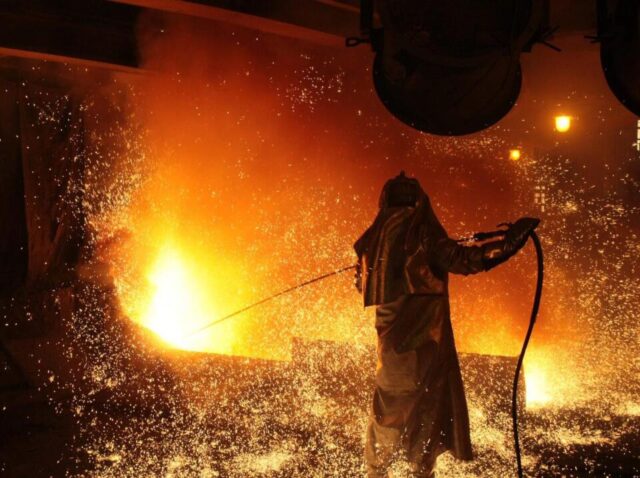South Africa’s economy may have skirted a technical recession in the first quarter of 2023, in spite of output in the primary industrial sectors of mining and manufacturing contracting in March.
SOUTH Africa’s economy may have skirted a technical recession in the first quarter of 2023, in spite of output in the primary industrial sectors of mining and manufacturing contracting in March.
Data from Statistics South Africa (Stats SA) on Thursday showed that mining production shrank by 2.6% year on year in March, following an upwards revised 7.6% dip in February.
This marked the 14th consecutive month of contraction in mining activity, albeit softer than market estimates of a 7.3% decline, dragged down by electricity supply constraints and logistical bottlenecks.
Stats SA said the annual decline in mining output was broad-based, with nine out of 12 divisions falling.
The most significant negative contributors were diamonds which fell by 54.7%, and platinum group metals (PGMs), which declined by 9.1%.
However, on a seasonally adjusted monthly basis, mining output increased by a robust 6.5% in March after a material decline of 7.0% in February.
On a seasonally adjusted monthly basis, mining production advanced by 6.5% in March, after an upwards revised 7% slump in the prior month.
Output grew by 1.0% quarter on quarter in the first quarter of 2023, following a 3.4% quarterly decline in the fourth quarter of 2022, and this likely contributed to real gross domestic product (GDP) growth in the quarter.
This is despite intensified load shedding between the two quarters, counteracting the negative contributions from new vehicle sales and electricity generation.
Stats SA’s principal survey statistician, Juan-Pierre Terblanche, attributed the quarterly increase in output to the rise in gold and ore divisions.
“After recording a decline of 3.4% in the fourth quarter of 2022, South African mining production strengthened in the first quarter of 2023, rising by 1% on a seasonally adjusted basis,” Terblanche said.
“The rise in the first quarter was led by increases in gold, PMG, iron ore, manganese ore and chromium ore. Gold and PMG were the largest positive contributors, increasing by 4.2% and 3.1%, respectively.”
FNB senior economist Thanda Sithole said while mining output for March was encouraging, they were concerned about the wide retrospective revisions causing economic forecast volatility.
Sithole said they maintained the view of a decline in aggregate mining output this year.
“While the prices of most of South Africa’s major export commodities have moderated amid slowing global growth, idiosyncratic factors such as intensified load shedding, transport and logistics challenges, as well as elevated input costs are expected to weigh heavily on production and export volumes,” he said.
“Over the medium term, we expect industries implementing measures like electricity self-generation to mitigate the impact of load shedding, which should support a recovery in output.”
Production in the mining and manufacturing industries, which contribute at least 15% to GDP has been falling as large industry users of electricity are often in these sectors.
This has negatively affected industrial production and economic growth.
Meanwhile, manufacturing production in South Africa fell by 1.1% in March, following an upwards revised 5.6% slump in February.
This was the fifth consecutive month of declines in industrial activity, though the softest in the current sequence, sharply below market forecasts of a 6.1% drop.
Output fell at a slower pace for furniture and other manufacturing; electrical machinery and textiles; clothing, leather and footwear.
Additionally, production rose faster for motor vehicles, parts and accessories and other transport equipment and bounced back for food and beverages.
On a seasonally adjusted monthly basis, manufacturing output rose by 4% in March, the most in six months rebounding from a 1.3% decrease in the prior month, and against market forecasts of a 0.3% fall.
Oxford Economist head of Macro Jacques Nel said the 4.0% month-on-month uptick meant that output increased 1.4% quarter on quarter in the first quarter of 2023.
Nel said this pointed to a positive contribution to overall GDP growth by the manufacturing sector.
“That said, factory output is still down 3.7% year on year during the first quarter and highlights the impact of intensified power outages during 2023.
“We believe that manufacturers will become progressively resilient to the effects of load shedding, as companies reduce their energy dependence on embattled Eskom,” Nel said.
BUSINESS REPORT







